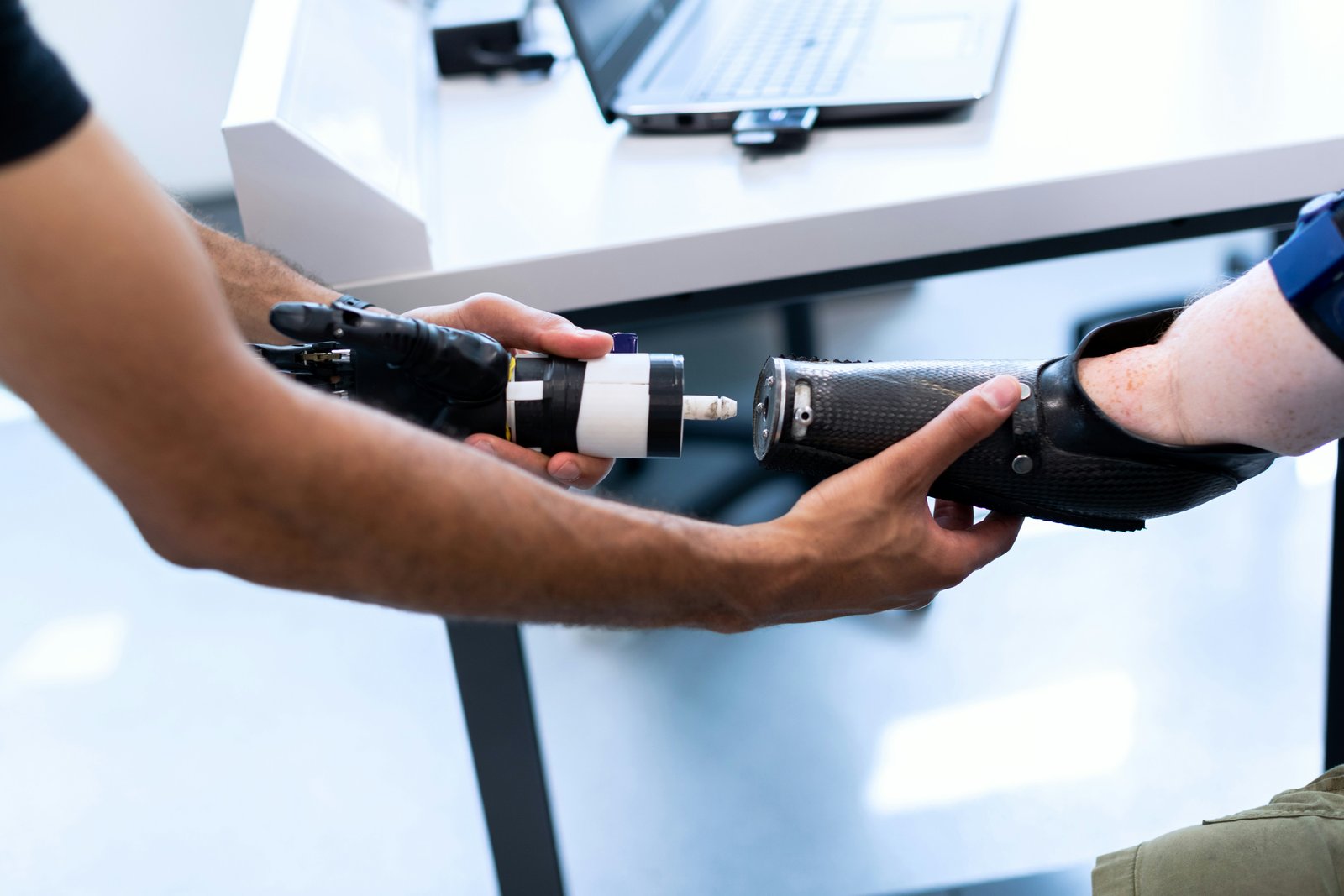NeurotechEU Dimension 6: Neuroprosthetics
Neuroprosthetics is a field of technology that connects the brain to devices, helping to restore or improve brain functions. It combines brain activity sensing, signal processing, and technology to create devices that can help people with brain injuries or disabilities. Neuroprosthetics involves creating devices that interface with the brain to restore or enhance neural functions. This exciting area of research is advancing rapidly, offering new ways to treat conditions that were once thought untreatable.
Examples of neuroprosthetics research are: Developing a prosthetic limb controlled by neural signals from the brain, allowing users to perform complex movements with high precision and feedback.
Robotic limbs
At Radboud University and Donders Institute in Nijmegen, an example of neuroprosthetics research is underway to improve neuroprosthetics and restore touch sensations to users of prosthetic limbs. Luke Miller is exploring how the brain adapts to wearable robotic limbs, like exoskeletons and prosthetic devices. His project focuses on non-invasive methods to restore touch, using exoskeletal fingers equipped with sensory feedback mechanisms such as silicon pads that replicate the force and vibration of a biological finger. By examining the neural and behavioral changes that occur when individuals use these devices, Miller aims to better understand how technology can integrate with the brain, potentially leading to improved prosthetic design and more intuitive use of these tools in both clinical and industrial settings.
8 Dimensions of NeurotechEU
The eight dimensions of NeurotechEU cover a wide range of topics, from advancing research and treatments to addressing ethical questions related to how technology interacts with the brain, with the objective of creating a bridge between several disciplines. These dimensions aim to tackle what the Alliance identifies as “neurochallenges” – issues that require multidisciplinary approaches at the intersection of neuroscience and neurotechnology.
- Empirical and clinical neuroscience: Investigating brain function and developing treatments for neurological disorders.
- Theoretical Neuroscience: Using computational models to explain and predict brain activity.
- Neuromorphic Computing: Designing computer systems inspired by the brain to enhance efficiency.
- Neuromorphic Control and Neurorobotics: Creating robots capable of adapting and moving like living beings.
- Neuroinformatics: Building tools to manage and analyze large-scale brain data.
- Neuroprosthetics: Developing devices to interface with the brain, restoring or augmenting its functions.
- Clinical Neurotechnology: Applying digital systems for real-time monitoring and treatment of brain conditions.
- Neurometaphysics: Exploring ethical, legal, and philosophical issues surrounding the use of neurotechnology.

